“Where is the way to the dwelling of light? And darkness, where is its place, That you may take it to its territory, That you may know the paths to its home? Do you know it, because you were born then, Or because the number of your days is great?” (Job 38:19-21)
Chapter 6
Chapter 6
Does cosmology prove
the Earth is ancient?
SYNOPSIS: How reliable are cosmological models? – The big bang controversy – Ninety-five percent of the universe is made up of hypothetical entities – Richard Dawkins loses university debate against young earth creationists – There is no scientific body of gap creationism – Young universe fits with Einstein’s theory of relativity – Young earth creation model fits with Scripture – The answer to starlight and time – What is eternity?
Most gap creationists believe the time period between the so-called “initial creation” and the “re-creation” lasted billions of years, bringing Genesis into line with the age of the earth according to secular science (e.g. evolutionary geology and evolutionary cosmology, etc). However, gap creationists do not accept biological evolution.
Those who believe in an ancient earth are convinced big bang theory is the best cosmological explanation we have. However, many secular scientists are, in fact, ‘Bucking the Big Bang’, as it has been called in a 2004 article in New Scientist, in favour of other astronomical models and explanations, such as Stephen Hawking’s M-theory (multi-verse theory), and Roger Penrose and Vahe Gurzadyan’s conformal cyclic cosmology, and there are others.
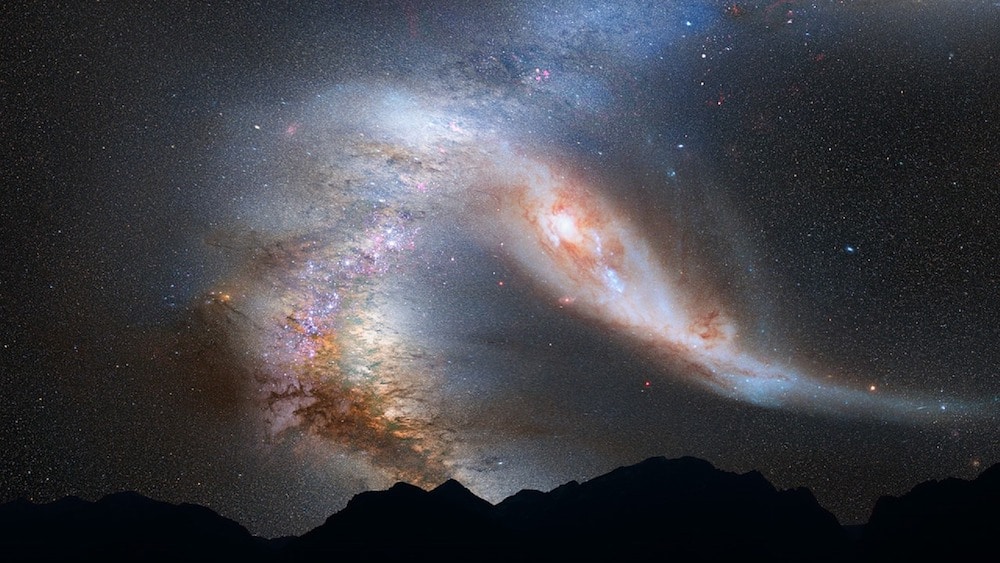
The point being that all cosmological theories about how the universe was formed are founded on a branch of theoretical physics that relies on many hypothetical entities which are suspiciously untrustworthy and plagued with uncertainties.
These cosmological philosophies at the macro level reflect the same speculative ideas at the nano level, in quantum physics, because they are branches of metaphysics based largely on mysteries. So when any person dismisses young earth explanations about the universe because they rely on speculation and conjecture, it also needs to be acknowledged that it is the same for whatever cosmological model is used, including the big bang, as no man was present to witness the beginning of the creation.
Examples of the hypothetical entities that big bang cosmology relies on are dark matter and dark energy, which are said to make up 95 per cent of the universe according to this model. Yet these entities, which have never been observed (and we don’t even know if they exist, for they are mysteries) are necessary in order to eliminate some of the contradictions inherent in its theory.
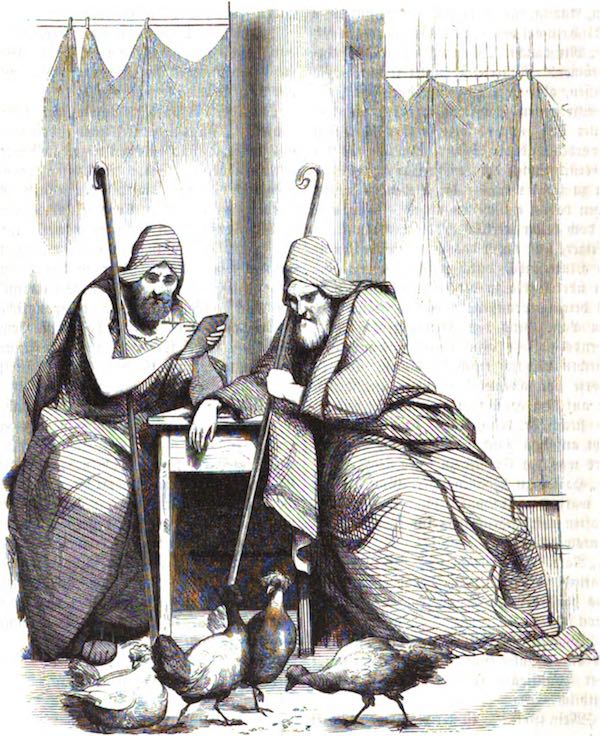
Science writer Alexander Waugh has stated in an article that these uncertainties are an intrinsic part of all branches of the origin sciences. (Note: augurs of Ancient Rome pictured.)
“Hawking can use his recondite algebra to the same effect as the ancient wise man used his literacy to gain authority over the illiterate masses. But will future generations look back on Hawking and his confreres of the late 20th and early 21st centuries as heroic Newtons and Einsteins, or with the same lofty condescension with which we now mock the augurs of Ancient Rome?” (‘A Plague of Infinities’, The Spectator, 11 September 2010)
In other words, we don’t know if these apparently brilliant theoretical scientists have discovered truths or if they are communicating complete nonsense (based on imagination and mysticism) while wearing the mantle of “science”.
I needed to explain that, because those who believe in the big bang, or any other ancient-earth theory, still rely (perhaps unaware) on the reasoning of these and other scientists who are expressing their own philosophies and opinions as to how the universe came into being and operates.
Problems with secular science
Although the gap theory rejects the concept of biological evolution, it still (ironically) believes that the scientific establishment is generally searching for truth, without being swayed by inherent prejudices and biases. This could not be further from reality – for any individual! In the case of scientists, they do not operate within a metaphysical vacuum but interpret all data, by necessity, through their own philosophical/religious worldview (the overwhelming majority being evolutionists), not just in biology and palaeontology but also in cosmology and geology and all the other sciences making origin claims.
For example, no one in secular science would ever consider the creation (or the gap theory’s “re-creation”) could have been completed in six days, with man, and everything else, appearing instantaneously, fully formed and in a mature state. This means no scientist would ever pursue scientific inquiry from this perspective but would wilfully look for a completely different explanation. As such their foundation and models are entirely based on unbiblical errant human reasoning, which our Creator calls “philosophy and empty deceit, according to the traditions of men” (Col 2:8). And if any scientific enquiry today lent support to a six-day creation they would immediately abandon it, as it does not fit their evolutionary presuppositions. Also, the very thought that the Bible might be true would carry with it huge (and unwanted) spiritual and moral repercussions, too.
Unless, that is, they are young earth creationists whose scientific credentials and arguments are considered a real threat to ancient earth philosophers and the evolutionary paradigm.
This is why the scientific establishment attacks biblical creation so vehemently.
the great debate: young earth vs. old earth
An example of this is a debate held in 1986 at Oxford University (see below), which pitted young earth creationist Professor A. E. Wilder-Smith against Richard Dawkins.
Wilder-Smith had Edgar Howard Andrews on his team and Richard Dawkins had John Maynard Smith on his team. Among other accomplishments, Wilder-Smith (d. 1995) had three earned doctorates, was a fellow of the Royal Society of Chemistry, director of a Swiss pharmaceutical company and a NATO three-star general.
As for Edward Andrews, he had a DSc (higher doctorate) in applied physics. He wrote more than 100 research papers and scientific books, and he was a chartered engineer and chartered physicist (which indicated his high level of professional competence).
The outcome of the debate? Wilder-Smith and Edgar Andrews won by 198 votes to 115! (Refer, Doug Sharp & Dr Jerry Bergman, Persuaded by the Evidence, pp 278-279). )
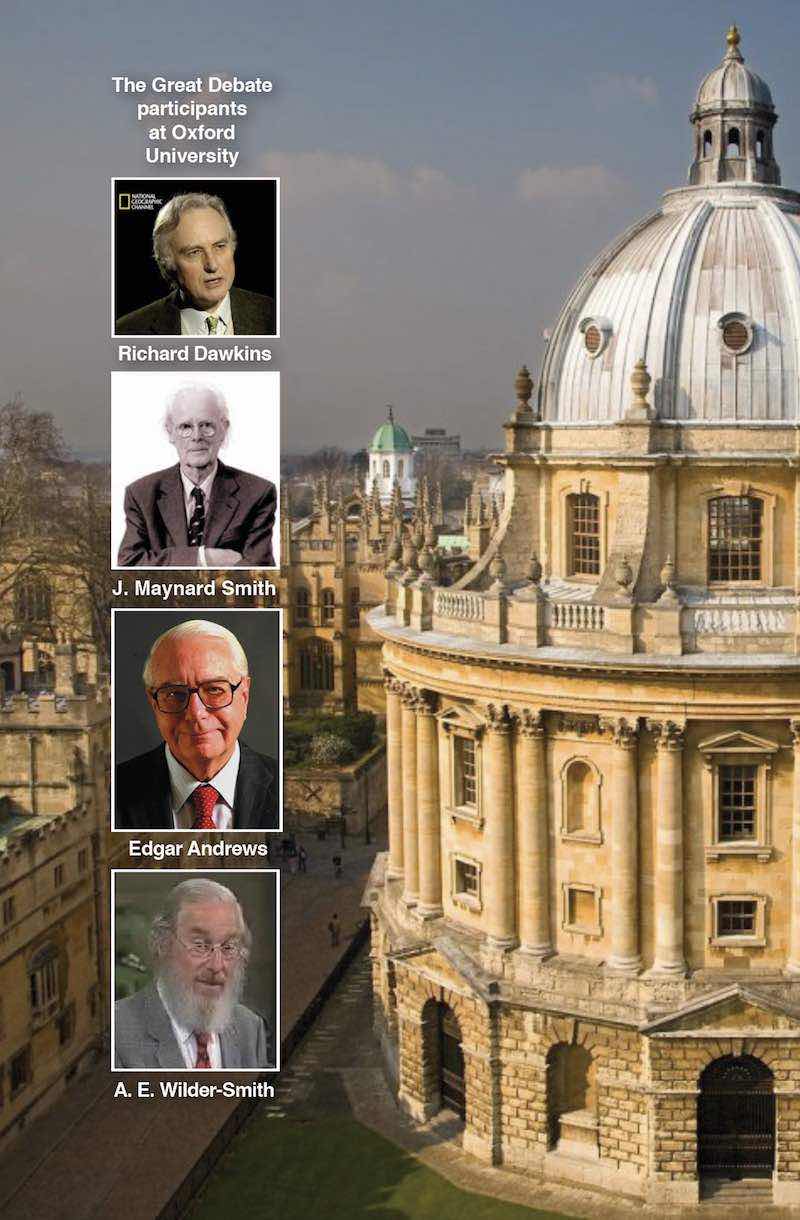
This was in spite of the fact that most of those present were staunch old-earthers and pro-evolutionists and it was conducted on Dawkins’ own home territory, Oxford University.
YOUNG-EARTH AND GAP THEORY SCIENCE
Most people are ignorant when it comes to the number of scientists who hold to a young-earth creation view. When I researched this in 2013, there were at least 12 young earth creation science organisations in the world with hundreds of scientists with PhD or Masters degrees. (The Korean Association of Creation Research alone had around 500 PhD or MA degree voting members.) Some of these scientists have held professorships, are leaders in their scientific discipline, or been nominated for Nobel Prizes.
In fact, the majority of young earth creation scientists were evolutionists who came to realise the critical flaws in secular old-earth dating methods that are better explained in the context of a young earth and catastrophism.
One such scientist is John Sanford, who was a professor at the prestigious Cornell University for 25 years. He received his PhD in the area of plant breeding and plant genetics. (He still holds the title of Courtesy Professor at Cornell, indefinitely.) While at Cornell, he published more than 70 scientific publications and now holds more than 20 patents. He has also started two successful businesses derived from his research: Biolistics Inc and Sanford Scientific Inc.
Sandford was a pioneer of genetic engineering and inventor of the “gene gun”, which has prevented the starvation of millions of people in the developing world. Dr Sandford was an agnostic evolutionist and became a Christian well into his career. It was the evidence in his own field of genetics that persuaded him to be not only a creationist, but specifically a young-earth creationist.
Another such highly esteemed scientist (who sees no evidence for an ancient earth) is physician Raymond Damadian, who invented Magnetic Resonance Imaging (MRI). Among his honours, Damadian was awarded the National Medal of Technology, America’s highest award for applied science. He is also enrolled in the Inventor’s Hall of Fame. (Refer to Jerry Bergman’s book, Persuaded by the Evidence, for all of these and other examples. Also, see Persuaded by the Evidence [for Creation], Part 1, Volume 1: https://www.youtube.com/watch?v=e3OihbyVKB4.)

Now let us compare this to gap creation science – there is none!
This is because, as far as I know, there is no defending body of gap creation scientists in the world today. Thus, there are no public gap creation debates and no scientific papers being published! That is also why gap creationism clings to certain explanations provided by the evolutionary scientific community (e.g. “the age of dinosaurs” and the “age of man” – found nowhere in Scripture).
Nevertheless, I know some gap creationists who are quick to poke fun at young earth scientists. I find that ironic!
Time slows down in a gravity well
With regard to cosmological models, there are a number based on a recent creation, all supported by Einstein’s theory of relativity, and they are just as plausible as old earth models. One such young earth theory, which was formulated by nuclear physicist and former atheist Dr Russell Humphreys, is white hole cosmology (Refer Starlight & Time: Solving the Puzzle of Distant Starlight in a Young Universe, DVD and book, CMI).
Humphreys renounced evolution and embraced young earth creation on the basis that he could find no evidence for an ancient earth.
Instead of starting with the arbitrary big bang premise that the universe is infinite and uniform and has no centre (how can an explosion not have a centre?), Humphreys began with the biblical premise that the universe is finite (Ps 147:4 ) and it has an edge (Is 40:22), and that the earth has a central position, spiritually (though not geometrically). After all, the earth occupies the central position in the universe because of its God-given role and the significance of mankind (Deut 10:14; Ps 8:4-8). And no other astronomical body is called God’s footstool (Acts 7:49).
As for evolutionary models, in which man and the earth are not viewed as specifically important, these ALL run contrary to Scripture.
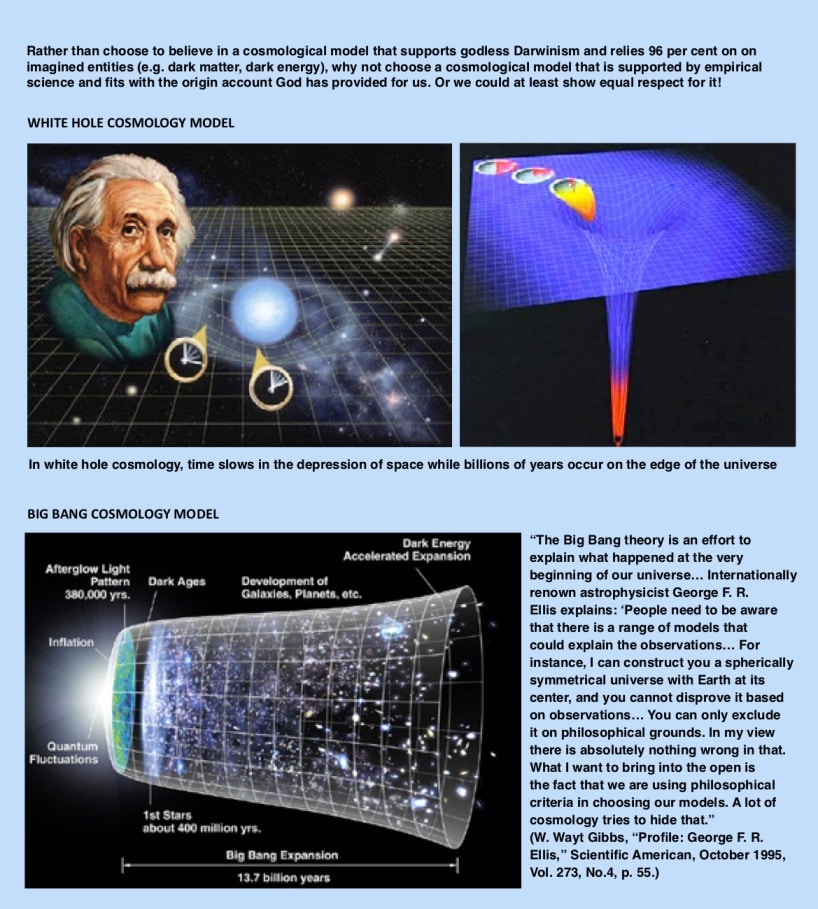
Empirical science (which is observable, testable and repeatable under laboratory conditions) has proved that time slows down in a gravity well. An earthly example of this is the atomic clock, which is the most accurate chronometer invented by man. There are two atomic clocks in the world: one at sea level in Greenwich, England, and the other at Boulder, Colorado, 1524 metres (5000 feet) above sea level. Each of these clocks run at different rates, because the mass of the earth distorts space-time and produces a gravity well. This means that time in Greenwich runs slower than in Boulder – after one year there is a five-microsecond difference.
In Russell Humphreys’ white hole cosmology, the earth is located within this deep depression of the fabric of space. Thus, millions of years of physical processes are occurring on the edge of the universe, while time on earth, deep within the gravity well, is ticking away measured in days (see diagram above right).
Some gap creationists agree with young earth creationists that God could have created starlight to reach the earth immediately at the time of creation. This makes sense not just in young earth creationism but also in old earth creationism, because if God had not done this it would mean that the heavenly bodies would have to have been created billions of years before the “initial earth”, in order for starlight to reach that version of the planet!
In other words, gap creationists who reject that God can instantaneously create distant starlight reaching the earth in one day have merely transferred the same problem onto the “initial creation”.
With regard to the claim that the universe has to be billions of years old otherwise we on earth would not be able to view the light reaching us today from the explosions of supernovas more than 6000 light years away, it is a good point and sounds logical. But it is not necessarily correct reasoning.
I don’t plan to spend much time on this, but there are two points that need to be considered.
Starlight and time
Firstly, a less-well-known aspect of Einstein’s physics is that the speed of light in one direction cannot be objectively measured, and so it must be stipulated (agreed upon by convention). This stands in contrast to the round-trip speed of light, which has been measured and found to be always constant. The reason that the one-way speed of light cannot be objectively measured is that you need to have a way to synchronise two clocks separated by a vast distance to record a detectable value. But in order to do this, you have to already know the one-way speed of light. In other words, it cannot be done without circular reasoning.
Albert Einstein‘s resolution to this dilemma was to suggest that the one-way speed of light is not actually a property of nature but is instead a convention – something that we may choose!
So although many physicists choose to regard the speed of light as being the same in both directions, any other choice is also acceptable, so long as the round-trip speed is 300,000km/s.
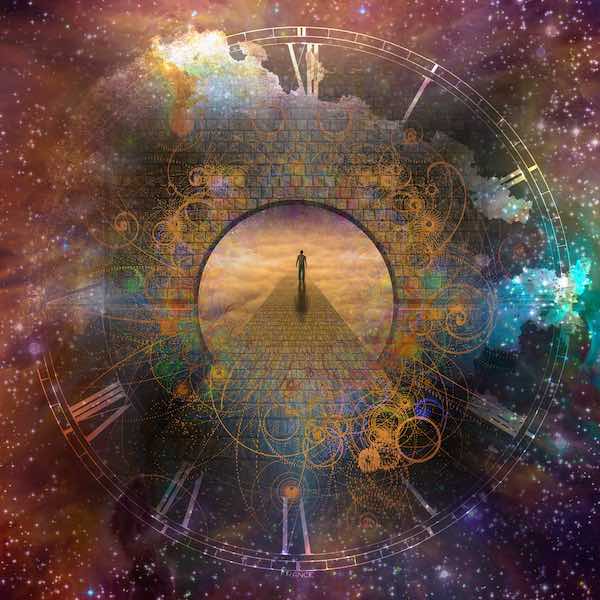
In which case, the transmission of light from exploding stars to the observer could, potentially, be instantaneous, while the reflected light travels back to the light source at the conventional speed of light.
This theory is just as plausible as any other theoretical model of the universe that does not conflict with Einstein’s theory of relativity.
Secondly, there is absolutely no guarantee that any cosmological model man has constructed and developed is anywhere near the truth of how the universe is structured and functions.
For example, even Einstein’s theory of relativity is not sacrosanct, as there are some secular cosmologists today who say the speed of light may have changed recently. If this is the case, it would undermine much of our current understanding of physics. In a 2004 New Scientist article we are told:
“The controversial finding is turning up the heat on an already simmering debate … A varying speed of light contradicts Einstein’s theory of relativity, and would undermine much of traditional physics.” (www.newscientist.com/ article/dn6092-speed-of-light-may-have-changed-recently.html).
The fact is, the whole matter of time is an enigma to man, so we would be wise to not make rash statements. For example, I recently watched a very interesting Sid Roth interview with Chuck Missler, who was describing time and eternity. Here I have paraphrased Missler’s comments:
“We all assume that time is linear and absolute. After all, in our understanding, time operates from left to right – e.g. the birth, life and death of a person or empire. So when we start talking about eternity, or God, we tend to imagine someone who has lots of time, because we think of eternity as a line that starts at infinity on the left and goes to infinity on the right. That, however, is bad physics. This is because we know from Einstein’s theory of relativity that time is a physical property that varies with mass, acceleration and gravity.
“Is God someone who is subject to gravity? Of course not. So God is also someone who is not subject to time. Rather, he dwells outside of the restrictions of the physical realm. The origin of God’s Word – the Bible – is also outside of time, because God alone knows the end from the beginning. The prophet Isaiah writes:
“‘For thus says the High and Lofty One, Who inhabits eternity, whose name is Holy…’ (Is 57:15)
“God demonstrates this by knowing about history before it happens.
“‘For I am God, and there is no other; I am God, and there is none like Me, Declaring the end from the beginning, And from ancient times things that are not yet done…’ (Is 46:10)
“To us, life is a sequence of events. For example, we can be standing on a street corner waiting for a marching band to come around the corner. That is our reality. However, someone who is in a helicopter above can see the beginning and the end simultaneously. That is the position God is in.” (https://www.youtube.com/watch?v=2OtIyQ3HHHI)

TECHNOLOGY VS. SCIENTIFIC INVENTION
The point is to say that man (especially unconverted man) in the 21st century likes to congratulate himself for being more knowledgeable and wiser than any previous generation. This in itself is an outcome of evolutionism – the errant philosophy that man is getting smarter with every decade.
The fact is, developments in industry and technology have improved our lives, but they have also led to an undeserved and uncritical faith in all things termed science.
Defining the difference between technology and scientific invention, science writer Fergus McGinley explains that while technology has substance, scientific invention has a large dose of mystery. He then explains some of the erroneous assumptions underlying scientific inquiry:
The problem with scientific theories and laws is that they can’t be seen or handled. They’re usually expressed symbolically – on paper, in mathematical equations, in technical journals and textbooks.
“Worse still, they’re often about things which themselves can’t be seen (like gravity, atoms, genes, wave functions and quarks), or about things which existed long ago or happened slowly over a long period of time (the big bang, evolution, continental drift), or about things that are so complex, or big, or far away that they are very hard to measure (El Nino, black holes).
“Science has power, but it also has plenty of mystery and mystique; technology just has power!” (Fergus McGinley, ‘Science: Discovery Or Invention’, CEN Technical Journal, Vol 13[2], 1999)
But although man may be gaining knowledge (especially in the field of technology), he is also becoming more deceived and morally degenerate, as the Bible foretells (Dan 12:4; 2 Tim 3:1-7).
Also, we should never confuse the genuine advancement in the empirical sciences and technology with “advancement” in scientific theories and mysticism and the philosophy of naturalism – the origin sciences.
MAN’S WORDS WITHOUT KNOWLEDGE
And I cannot help but think of our Creator’s awesome and sobering words to Job, when He answered him out of the whirlwind and questioned his presumed wisdom on the very matter of light. From Job’s response, we know he was deeply sorrowful and humbled, and he repented (Job 40:3-5; Is 66:2; Ps 34:18). (Job pictured below with his wife and friends.)

“Then the LORD answered Job out of the whirlwind, and said: ‘Who is this who darkens counsel by words without knowledge? Now prepare yourself like a man; I will question you, and you shall answer Me. Where were you when I laid the foundations of the earth? Tell Me, if you have understanding. …'” (Job 38:1,2-4)
“Where is the way to the dwelling of light? And darkness, where is its place, That you may take it to its territory, That you may know the paths to its home? Do you know it, because you were born then, Or because the number of your days is great?… Do you know the ordinances of the heavens? Can you set their dominion over the earth?” (Job 19-21; 33)
“Then Job answered the LORD and said: ‘I know that You can do everything, And that no purpose of Yours can be withheld from You. You asked, “Who is this who hides counsel without knowledge?” Therefore I have uttered what I did not understand, Things too wonderful for me, which I did not know.’” (Job 42:1-3)
And in the New Testament, the apostle Paul reminds us:
“For the wisdom of this world is foolishness with God. For it is written, ‘He catches the wise in their own craftiness’.” (1 Cor 3:19)
It has been estimated (in 2012) there are at least 10,000 young-earth creation scientists in the US alone. Some dismiss old-earth evolutionism openly, others privately.
For anyone who wants to seriously research the claims that our earth is billions of years old, they will find a recent-earth explanation for every old-earth explanation by equally credentialed scientists.
Images: David Iliff (edited); iStock.com/bestdesigns; iStock.com/CrossEyedPhotography; Mihai Simonia/Shutterstock.com; mpaniti/Shutterstock.com; Pexels; Pixabay; Wikicommons.
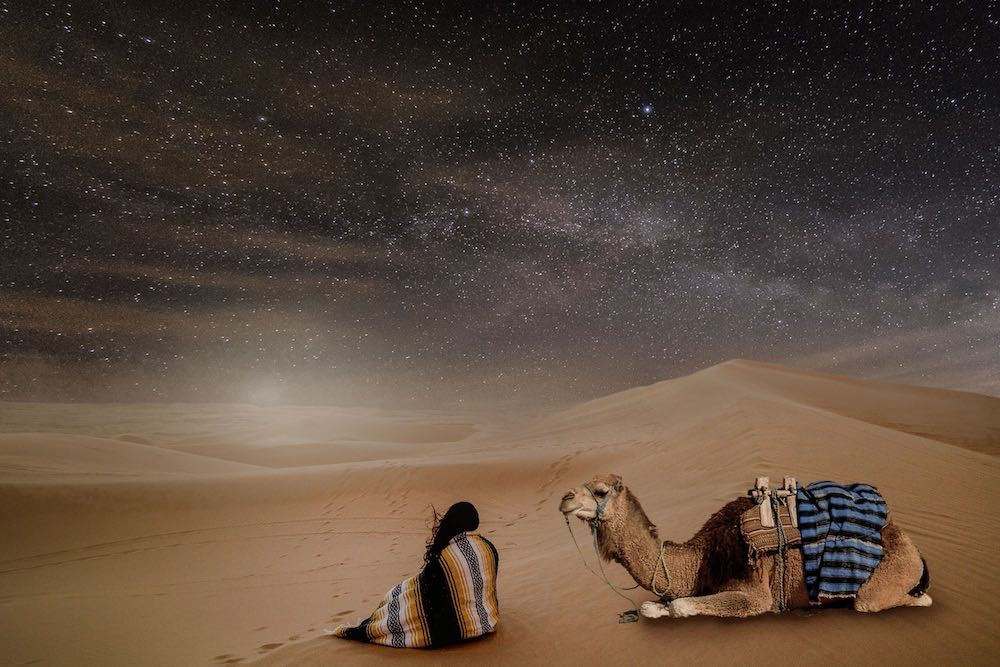
“He counts the number of the stars; He calls them all by name.” (Ps 147:4)
